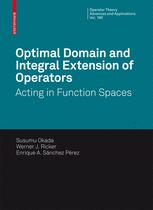

Most ebook files are in PDF format, so you can easily read them using various software such as Foxit Reader or directly on the Google Chrome browser.
Some ebook files are released by publishers in other formats such as .awz, .mobi, .epub, .fb2, etc. You may need to install specific software to read these formats on mobile/PC, such as Calibre.
Please read the tutorial at this link: https://ebookbell.com/faq
We offer FREE conversion to the popular formats you request; however, this may take some time. Therefore, right after payment, please email us, and we will try to provide the service as quickly as possible.
For some exceptional file formats or broken links (if any), please refrain from opening any disputes. Instead, email us first, and we will try to assist within a maximum of 6 hours.
EbookBell Team

4.1
40 reviewsOperator theory and functional analysis have a long tradition, initially being guided by problems from mathematical physics and applied mathematics. Much of the work in Banach spaces from the 1930s onwards resulted from investigating how much real (and complex) variable function theory might be extended to fu- tions taking values in (function) spaces or operators acting in them. Many of the ?rst ideas in geometry, basis theory and the isomorphic theory of Banach spaces have vector measure-theoretic origins and can be credited (amongst others) to N. Dunford, I.M. Gelfand, B.J. Pettis and R.S. Phillips. Somewhat later came the penetratingcontributionsofA.Grothendieck,whichhavepervadedandin?uenced theshapeoffunctionalanalysisandthetheoryofvectormeasures/integrationever since. Today, each of the areas of functional analysis/operator theory, Banach spaces, and vector measures/integration is a strong discipline in its own right. However, it is not always made clear that these areas grew up together as cousins and that they had, and still have, enormous in?uences on one another. One of the aims of this monograph is to reinforce and make transparent precisely this important point.